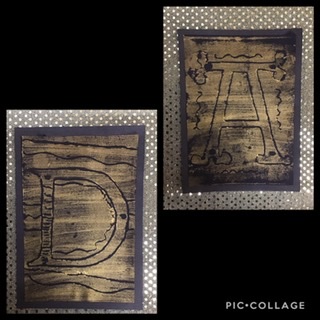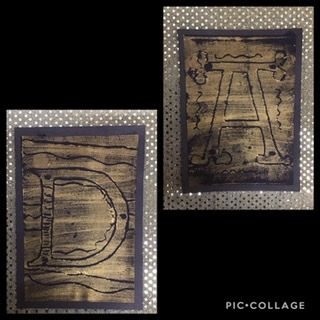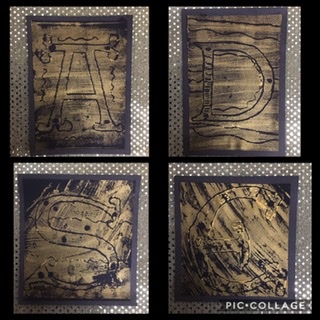
In the middle ages, all books were hand written and decorated by hand, usually by priests and monks. They were seen as very precious works of art, and you had to be very skilled to produce them. These manuscripts were called ‘illuminated’ because the letters and pictures were often decorated with gold and silver leaf. The word ‘illuminated’ comes from the Latin word illuminare, meaning “light up.”
As the first printing press was introduced by William Caxton in 1476, he inspired us to create our own illuminated lettering printing block. We then linked this to mathematics and symmetry. We discussed how printing a pattern would give the mirrored effect of our block pattern, thus showing exactly how symmetry works in everyday life and combining a little bit of maths into history and art.
We found out that letters which do not have a line of symmetry down the centre (examples: L, D, R) have to be printed backwards in order for the letters to appear the correct way round. Letters with a line of symmetry (examples: A, M, 0, H) do not have to be printed backwards because they appear the correct way round when printed.




(1).jpg)